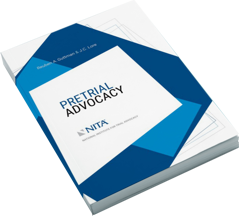As courts around the country have struggled to continue operations in the face of the unprecedented coronavirus pandemic, each state and the federal courts have issued their own set of guidelines to try and resume trials. However, each jurisdiction, and each judge has also implemented their own set of practices, given their resources, staffing, budget, and judgement. While most of these national, regional, and individual practices have been conducted on a trial and error basis, the goal of this conference is to provide practical recommendations on procedures, resources, and skills for both courts and attorneys who are looking to conduct jury trials in this challenging time.
Dates: November 13, and 20th, 2020
This conference is free of charge. Attendees are encouraged to donate to a designated charity to assist underserved communities gain greater access to technology and the internet.
CLE credit will not be provided for this summit.
Reuben Guttman, from Guttman, Buschner & Brooks, PLLC, will be presenting a panel discussion on Implication for Post-Covid Litigation and Trials.
For Agenda information for this two-day free seminar, visit https://www.nita.org/summit-about?mkt_tok=eyJpIjoiTURreE56bG1OV1ZtTldOaiIsInQiOiJHait4UTcyR1VsNkZwR2M5cWNEMlEwYVwvS25XSTE2dUtsMGNpZmlYdE44aERFQUZudCtFWEIxQUNPXC9ocjJpZHlWa2JKOWZ2OGt4bWxjY2NwVUNyaktXU1BQZ2pUNEZmdmp1c0s1MUN3NXV1c0lnMHQ4ZVwvRFNtRFJtbzhcL3BLZmcifQ%3D%3D
